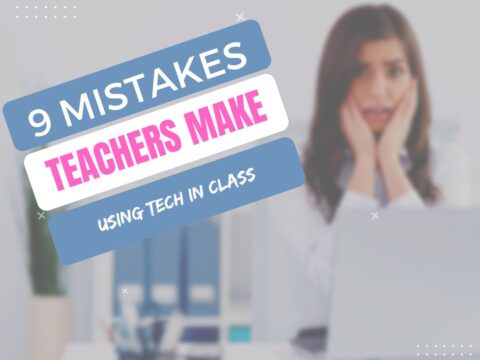 Common Core promises college and career, either/or, but what if you as a parent have been thinking ‘college’ so long, that you’re unprepared when your darling selects ‘career’? Ask a Tech Teacher contributor, Sara Stringer, has some ideas for you. I think you’ll like this:
Common Core promises college and career, either/or, but what if you as a parent have been thinking ‘college’ so long, that you’re unprepared when your darling selects ‘career’? Ask a Tech Teacher contributor, Sara Stringer, has some ideas for you. I think you’ll like this:
Every year, our school holds a Career Day, when people in our small-town community come and talk to our students about their careers. The trouble is, every year the careers represented are the same four or five careers that show up, like in a Richard Scarry book: teacher, banker, supermarket cashier. It’s no wonder that our kids grow up wanting to be movie stars and professional athletes, if these are the only other potential careers they see in person.
How can you teach your students about becoming a web developer if they’ve never met one? How can you teach your students about STEM careers in petroleum engineering — recently ranked on NPR as the college major that leads to the highest income — when there are no petroleum engineers within a 300-mile radius and, to be honest, you’re not quite sure what a petroleum engineer does?
Well, you’re a teacher. You have to think creatively.
Start by identifying interests, not careers
The first step when you’re talking to kids about career prep — whether they’re kindergarteners or high school seniors — is to talk in terms of interests, not jobs. Of course the kid who loves music is going to want to be a professional singer, if that’s the only career she thinks uses music. Of course the high school student who loves animals is going to want to be a veterinarian, despite the fact that the veterinary bubble has long burst and there are more vets than there are sick animals.
So your job is to get your students to think about interests instead. Do you like working on your own, or in groups? On many different tasks, or one focused task? Do you like playing with numbers, or with words? Tell your students that each job provides a different working atmosphere — fast-paced vs. slow, lots of conversation vs. quiet focus, outdoors vs. indoors — and the best type of career is the one that takes place in a working atmosphere that suits you. If you focus your initial career prep discussions on identifying interests and working styles, you begin to set your students on a path to career happiness without tying it to any one specific career.
Ask students to figure out how many jobs go into everyday items
If the only jobs in your area are teacher, banker and retail associate, you have to help your students discover the other jobs out there. Ask them to identify something they like — from Facebook to a bicycle to the latest Iron Man movie — and figure out exactly how many jobs went into creating that thing. Don’t let them stop with the obvious jobs. Go deeper. Does Facebook have lawyers? Does a movie studio have on-site daycare? Do bicycle stores hire web designers? That will help your students understand just how many different kinds of jobs are out there.
Encourage your students to consider many kinds of career paths
Every student has the opportunity to grow up and have a good career. Your job is to help them see that opportunity. Not every student is college-bound, but that doesn’t mean the students who aren’t are destined to a life of low-wage jobs.
It’s your job to prod the young woman in your math class, the one who turns in well-organized problem sheets but doesn’t hit all the answers, and talk to her about becoming an office manager or executive assistant. It’s your job to identify the student who can’t go to college due to family responsibilities, and suggest an associates degree as a paralegal through an online college like Bryant & Stratton online.
It’s your job to tell the would-be vet that there are plenty of careers that directly affect animals, from park ranger to marine engineering (another college major that results in a high-paying, in-demand job).
It’s also your job to tell your students to relax — to understand that there are many paths to a good career and, in fact, many of the best careers don’t even exist right now. (Explain, for example, that there was a time before “social media analyst” and “3D graphic designer” were careers.) As long as they stay true to their interests — that the cheerful, talkative student doesn’t end up in a windowless data entry job, or the hyperfocused student doesn’t get a job that requires continuous mutlitasking — they’ll be fine.
How do you help students prepare for careers? How do you help them understand that there are hundreds of careers out there that they may never have heard of? Do you ever directly steer a student towards a specific career path? Let us know in the comments.
Sara Stringer is a former medical and surgical assistant who now does freelance business consulting. She enjoys blogging and helping others. In her spare time (translation: the time spent doing what’s most important), she enjoys soaking up the sunshine with her husband and two kids.
Jacqui Murray has been teaching K-18 technology for 30 years. She is the editor/author of over a hundred tech ed resources including a K-12 technology curriculum, K-8 keyboard curriculum, K-8 Digital Citizenship curriculum. She is an adjunct professor in tech ed, Master Teacher, webmaster for four blogs, an Amazon Vine Voice, CSTA presentation reviewer, freelance journalist on tech ed topics, contributor to NEA Today, and author of the tech thrillers, To Hunt a Sub and Twenty-four Days. You can find her resources at Structured Learning.



































